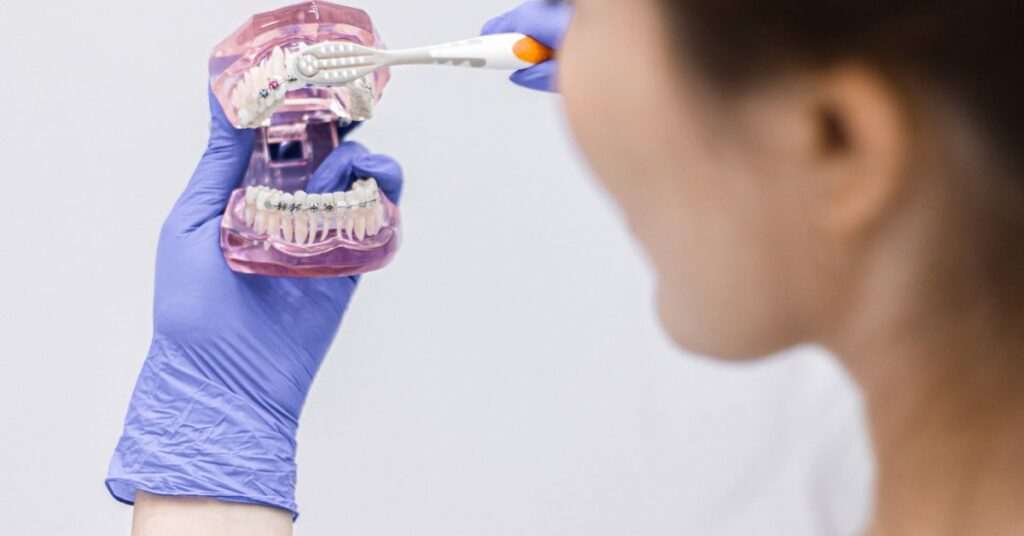Starting orthodontic treatment can feel like a big step in life. Many people imagine walking into the clinic, sitting in the chair, and immediately having their brackets and wires placed. What they don’t always expect is that there may be a smaller step before the main treatment begins.
This step involves spacers, also called separators, which are tiny devices placed between teeth to prepare them for the orthodontic journey ahead.
For patients who are new to treatment, hearing about spacers may raise a lot of questions. What are they? Why are they needed? Do they hurt?
The truth is, spacers are one of the simplest parts of the process, but they play a crucial role. They are like setting the foundation before building a house: without them, the rest of the treatment wouldn’t work as smoothly.
This article explains exactly what spacers are, why orthodontists use braces, what patients can expect, and how they fit into the larger picture of orthodontic care.
Table of Contents
ToggleWhat Are Spacers?
Spacers are tiny orthodontic tools that orthodontists place between the molars, which are the large teeth at the back of the mouth. Their job is simple: create a small amount of space between teeth so that bands, the metal rings that hold orthodontic appliances in place, can fit securely.
Although they look small, they are strong enough to shift teeth slightly apart. Spacers can be made from elastic material or stainless steel. Elastic spacers look like tiny blue or gray rubber doughnuts, while metal spacers resemble little springs.
Both work by applying gentle pressure that pushes teeth apart just enough to make room for bands. From the outside, spacers are barely noticeable. Patients may not see them when they smile, but they can feel them when they chew or run their tongue across their teeth.
They are temporary and usually worn for only a short time, but their role is important for setting up the main treatment, whether it involves traditional braces or modern options like Invisible dental aligners.
Why Do Orthodontists Use Spacers?
Teeth naturally fit closely together, especially molars. This close fit makes chewing efficient but leaves almost no room to slide in bands.
Orthodontic bands are essential because they anchor wires and other parts of the appliance. Without the right amount of space, these bands cannot be placed properly.
That’s where spacers come in. By creating a small gap,usually only one to two millimeters,they allow orthodontists to fit the bands comfortably and securely.
Without spacers, orthodontists would have to force the bands into place, which could cause pain, damage tooth enamel, or even slow down the entire treatment process.
Spacers also help prevent complications. If bands are not fitted correctly, they might loosen, causing discomfort and requiring extra visits. By preparing the teeth in advance, spacers make sure that bands fit correctly the first time.
Think of spacers as the opening act before the main performance. They may not be the star of the show, but they make sure everything is ready for the headliner: the brackets, bands, and wires that guide teeth into their new positions.
The Process of Getting Spacers
Placing spacers is a quick and straightforward process. During an appointment, the orthodontist stretches the spacer and gently slips it between two molars. This takes only a few seconds for each spacer. Patients may feel a little pressure, but it usually isn’t painful.
Once in place, spacers stay between the teeth for about one to two weeks. This time allows the molars to shift slightly apart, creating enough space for the bands that will follow. For some patients, especially those whose teeth are already spaced a little, spacers may only need to stay in for a few days.
The sensation of having spacers is often compared to having food stuck between the teeth. At first, it feels strange and even uncomfortable, but most people get used to it within a few days. The soreness usually fades as the teeth adjust.
In orthodontic clinics across South Delhi, professionals often use advanced technology like 3D imaging and digital scans to plan exactly where spacers should be placed. This careful preparation ensures that the process is smooth and that patients step into the main phase of treatment with confidence.
Common Experiences With Spacers
Discomfort and Soreness
It is common for patients to feel soreness or pressure when spacers are first placed. This is a sign that they are working. The discomfort is usually mild, similar to the feeling after chewing tough food.
Some patients may also notice tenderness in their gums for the first couple of days. Over-the-counter pain relief, if recommended by the orthodontist, can help manage this initial soreness.

Eating and Daily Life With Spacers
Eating with spacers requires a little extra care. Foods that are sticky, chewy, or hard can pull the spacers out of place.
Chewing gum, candy, or crunchy snacks are usually avoided during this stage. Softer foods like pasta, mashed potatoes, yogurt, and soups are much easier to eat while wearing spacers.
Daily life is mostly unaffected. Talking, smiling, and attending school or work go on as normal. Patients may simply prefer chewing on the opposite side of their mouth until the soreness fades.
How Long the Adjustment Takes
Most patients adjust to spacers within two to three days. After this period, they may hardly notice them. Once spacers are removed, there is often an immediate sense of relief.
Many patients feel proud of getting through this first step, realizing that they are now ready for the more noticeable parts of treatment.
Tips for Managing Spacers
Adjusting to spacers can be made easier with a few simple strategies. Choosing softer meals like smoothies, rice, or scrambled eggs reduces strain on the teeth and makes chewing more comfortable. Cold drinks can also help numb the gums and ease soreness.
When it comes to cleaning, gentle brushing is recommended. The areas around the molars should be handled carefully, while flossing near spacers is usually avoided until they are removed. Keeping the rest of the mouth clean helps maintain oral health during this stage.
Perhaps the most important tip is patience. Spacers are temporary and usually last only a week or two. Reminding yourself that this step is short and leads directly to smoother treatment can make it easier to handle.
Spacers vs. Brackets and Bands
Spacers, brackets, and bands all play important roles in orthodontic treatment, but they are often confused. Brackets are the small squares bonded to the front of teeth. They hold the wires that guide teeth into their new positions.
Bands are metal rings fitted around molars to provide stability and support for the wires.Spacers, on the other hand, are only used before bands are placed.
They create the space that allows bands to fit comfortably. Once the bands are in position, the spacers are no longer needed and are removed.
In other words, spacers prepare the teeth, while brackets and bands do the heavy lifting of moving them. Though temporary, spacers are essential for the treatment to work as planned.
Stories From Patients
Patient experiences with spacers are often very similar. A high school student described her initial nervousness before the appointment. She worried that spacers would be painful, but after the first day, she realized the soreness was manageable.
By the time they were removed, she felt relieved and ready for the next stage.A college student shared that he initially found eating with spacers frustrating.
Crunchy snacks, which he loved, became difficult to enjoy. But within days, he adapted by choosing softer foods, and when the spacers were removed, he was surprised at how quickly he forgot they had ever been there.
Another patient, a young professional, admitted to being self-conscious about the idea of spacers. However, since they were barely visible, no one even noticed them. This gave her confidence and reminded her that small inconveniences often lead to big rewards.
These personal stories highlight the same message: while spacers may seem intimidating at first, they are actually one of the simplest steps in orthodontic treatment.
Orthodontic Care in South Delhi
Orthodontic care in South Delhi has advanced greatly in recent years, with clinics offering a mix of modern technology and patient-focused service. Orthodontists in this region often combine digital imaging, 3D scans, and precise planning to make treatments more comfortable and effective.
At Teeth Aligners in India, patients are supported through every stage of their treatment, from the early steps like spacers to the final adjustments that create a confident smile. Clear communication about what to expect, along with professional care, makes the journey less stressful and more rewarding.
Conclusion
Spacers are small but vital in orthodontic treatment. They create the space needed for bands, which then support the rest of the appliances. Without spacers, bands would be difficult to place, and the treatment process could face complications.
While spacers may cause mild discomfort at first, the experience is short-lived and prepares the teeth for smoother progress later on.For patients just beginning their orthodontic journey, understanding the role of spacers helps reduce worry and build confidence.
Each step, no matter how small, plays a role in moving closer to a healthier, straighter smile. With professional guidance and a positive mindset, even the early stages of treatment can feel manageable and meaningful.

